
Hello community have you been here. It is a pleasure for me to publish here for the first time. I find it exciting to get to know places thanks to all those who write and transmit their travel experiences.
I want to tell you about one of the places I visited and that captivated me with its landscapes, cultures and people, is a trip to the indigenous community of Tierra Blanca in the state of Bolivar Venezuela. Through that part of the state you get to Amazonas. At one time I lived near Amazonas, and it is about 6 hours away by car, on very rough roads that only rustic or cargo vehicles can cross. They have deteriorated a lot because it is an area that in the rainy season everything is flooded, even the roads, because they are close to streams and important or large river crossings. One day I received the visit of some friends with a rustic vehicle and we decided to visit these indigenous communities. Some friends who knew the place guided us. We were in the town of Caicara del Orinoco, and we had to take the road to the town of Los Pijiguaos and from there to Puerto Ayacucho (Amazonas). On the road it is common to get these large stones on the sides.
Hola comunidad have you been here. Es un gusto para mì publicar por primera vez aquì. Me parece emocionante poder conocer sitios gracias a todos los que escriben y transmiten sus experiencias de viajes vividos.
Quiero contarles de uno de los sitios que visite y que me cautivò con sus paisajes, culturas y su gente, es un viaje a la comunidad indígena de Tierra Blanca del estado Bolìvar Venezuela. Por esa parte del estado se llega a amazonas. En un tiempo vivì cerca de amazonas, y cerca es a 6 horas en vehìculo, por carreteras muy accidentadas que solo vehículos rùsticos o de carga pueden atravesarlo. Se han deteriorado mucho porque es una zona que en la época de lluvias todo se inunda, incluso las carreteras, porque tienen cerca riachuelos y pasos de ríos importantes o grandes. Un dìa recibì la visita de unas amigas con vehìculo rùstico y decidimos ir a visitar estas comunidades indígenas. Unos amigos que conocían el lugar, nos guiaron. Nosotros en la población de Caicara del Orinoco, y había que tomar la carretera hacia la población Los Pijiguaos y de allí a Puerto Ayacucho (amazonas). En la carretera es común conseguir estas grandes piedras a los lados.
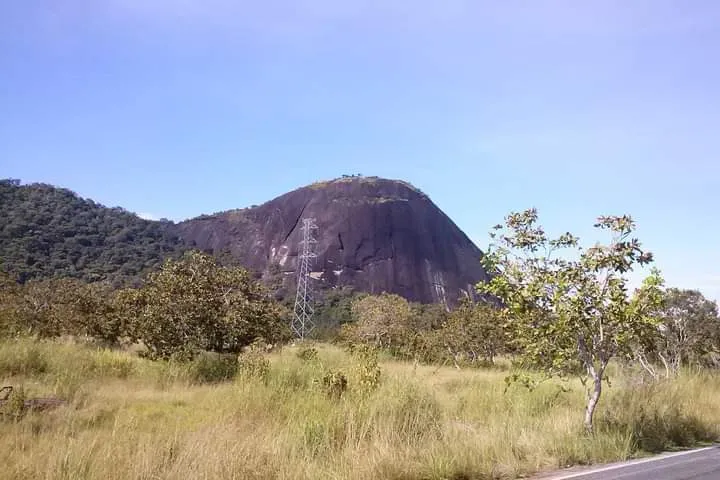
A Some with animal-like formations, like one that looked like a giant turtle, and you can ride on it for a souvenir photo. Between Los Pijiguaos and Amazonas is the Parguaza River pass, one of the largest after the Orinoco and Rio Negro, by the way, the community I visited is relatively close to the shore of this river, they are of the Piaroa ethnic group.
Algunas con formaciones parecidas a animales, como una que parecía una tortuga gigante, y te puedes montar en ella para la foto del recuerdo. Entre Los Pijiguaos y Amazonas se encuentra el paso del Rìo Parguaza, uno de los màs grandes después del rio Orinoco y Rio Negro, por cierto, la comunidad que visite està relativamente cerca de la orilla de este rio, son de la etnia Piaroa.

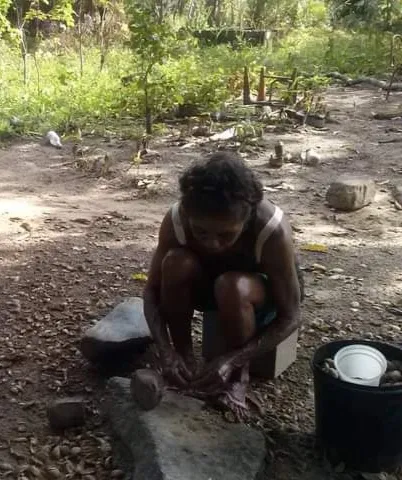
I was able to get to know these people closely, they are cheerful, hardworking, hospitable people, they are generous with the food they have, and if someone who visits them accepts their food they are happy and want to give you more, but of course there are things they eat that are hard to accept with pleasure, for example: they make a spicy food with this bachaco. They come out at a specific time, almost always when it is going to rain. They search in tobos. Some kinds are cooked to eat them and others, like this one I tried, are eaten raw. And they eat them just like you eat popcorn, with the same intensity and speed, hahaha, even you feel the crunchiness of the animal in their mouths when they are chewing it. So I had the acid test. Taste them.
Pude conocer de cerca a estas personas, son personas alegres, trabajadoras, hospitalarios, son generosos con la comida que tienen, y si alguien que los visita aceptan su comida se alegran y quieren darte màs, solo que claro hay cosas que comen que a uno le cuesta un poco aceptar con gusto, por ejemplo: ellos hacen un picante con este bachaco. Que salen en una época especìfica, casi siempre cuando va a llover. Ellos buscan en tobos. Algunas clases se cocinan para comerlos y otros como este que probè se come crudo. Y ellos se lo comen asì como uno comer cotufas, con la misma intensidad y rapidez, jajaja, hasta tu sientes que suena en sus bocas lo crujiente del animalito cuando se lo están masticando. Asì que me toco la prueba de fuego. Probarlos.
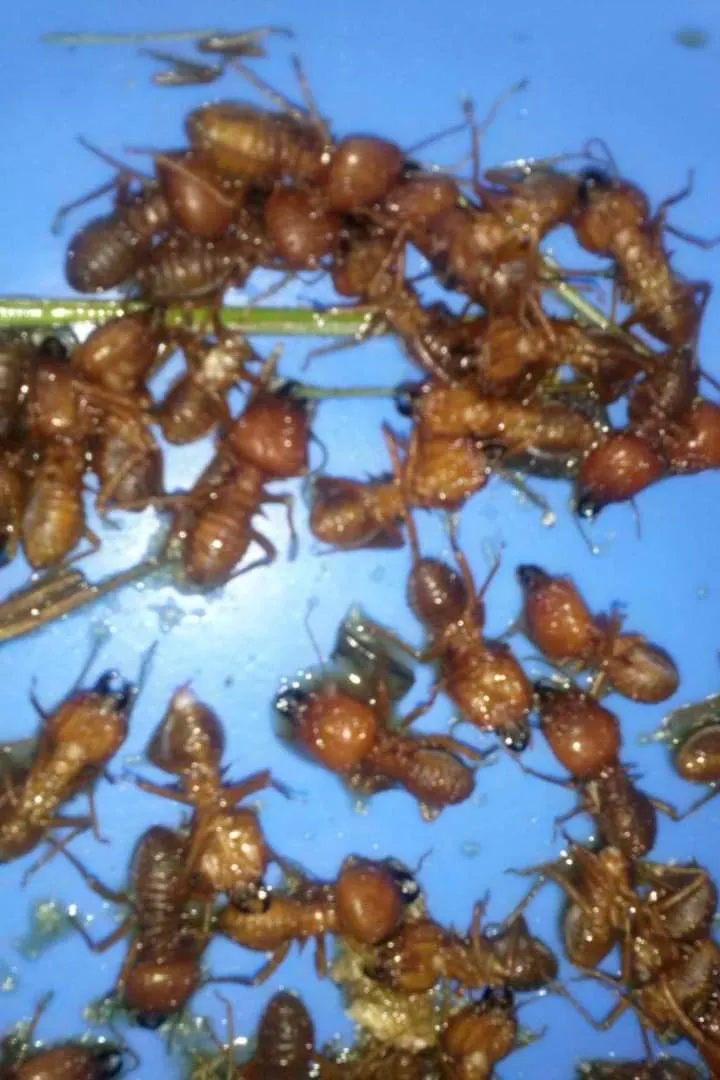

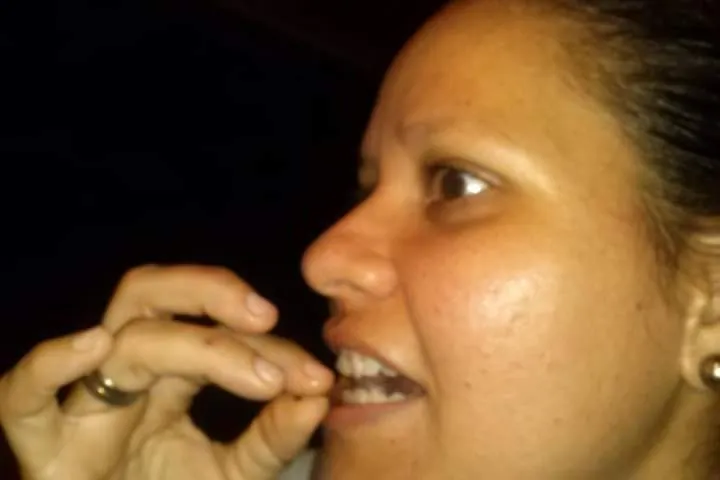
They have their crops or "conucos" in their backyards or 2 hours away from their community near the jungle, some go on foot, others on motorcycles. They plant a lot of yucca, which is necessary to make cassava and mañoco (I will explain what this is), for their consumption and to sell or exchange in other places when they leave their communities to the nearest town, they exchange it or make "barter" for clothes or other food. They also plant lechoza, ocumo, plantains, cambur, and a type of purple yam. With yucca they make mañoco or "yucuta". Based on yucca, they peel it, put it to ferment, squeeze it, and once it is dry, they put it on a griddle with large pieces of wood underneath and toast it until it is crunchy.
Tienen sus siembras o “conucos” en sus patios o a 2 horas de su comunidad cerca de la selva, algunos se van caminando,otros en motos.Siembran mucha yuca, que es necesaria para hacer el casabe y mañoco (ya les explico que es esto), para su consumo y para vender o cambiar en otros sitios cuando salen de sus comunidades al pueblo màs cercano, la cambian o hacen “trueques” por ropa o otra comida. Tambièn, siembran lechoza, ocumo, plàtanos, cambur, y un tipo de ñame morado. Con la yuca hacen mañoco o “yucuta”. A base de yuca, la pelan, la ponen a fermentar, la exprimen, y ya seca ponen esa masa en unas planchas con grandes trozos de leña por debajo y allì la tuestan hasta que queda crujiente.
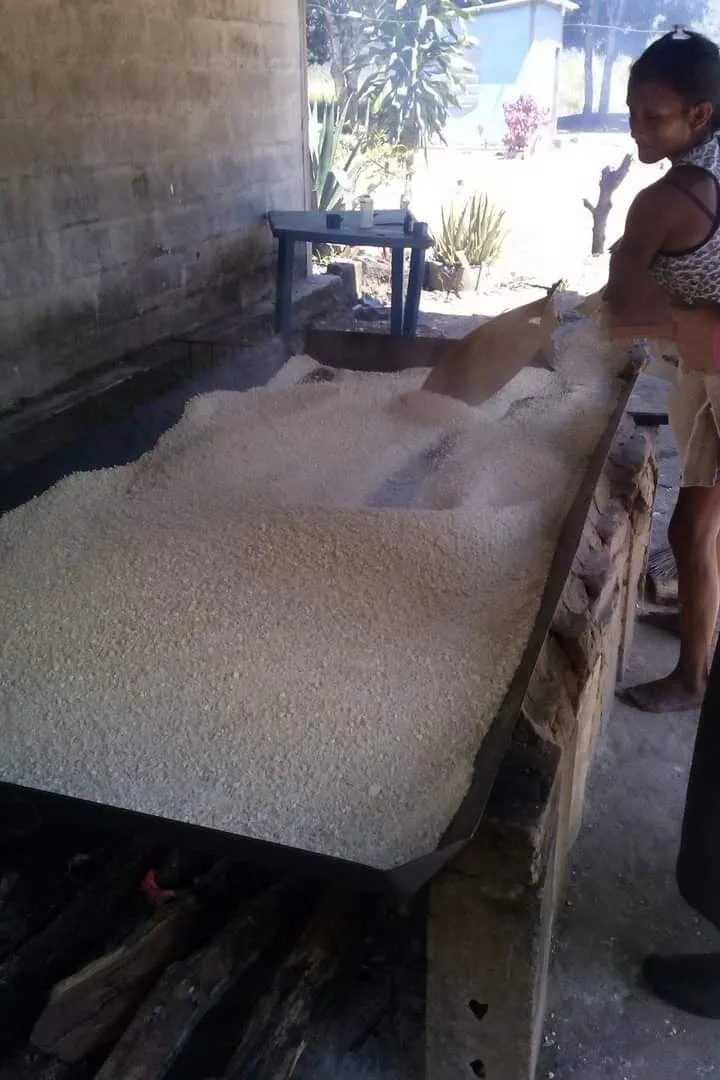
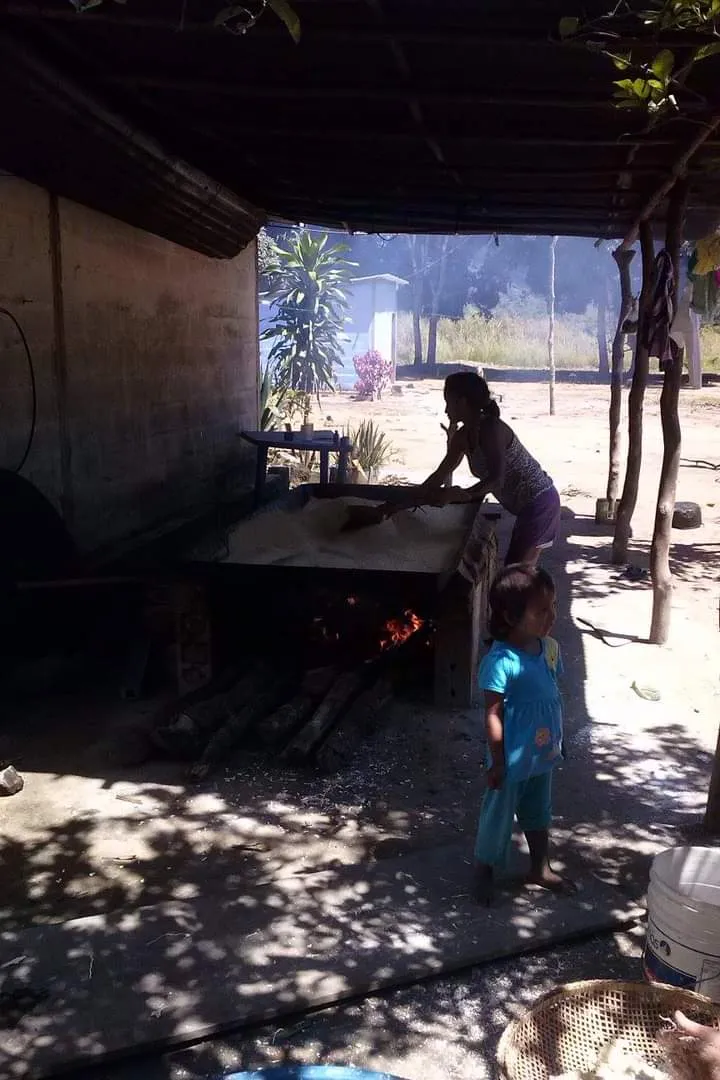
They make tobos de mañoco, because it is their indispensable food. The cassava, is another of their basic foods and they leave for them the thicker ones, so when they get a fish, or some hunting animal they complement their plate of food. They make a soup called Ajicero, which only contains water, salt, fish and hot pepper, because they love spicy food. And when they eat it they serve very little liquid with a piece of fish and there they use as forks a big piece of thick cassava, so they consume it all. With their own hands, they do not use spoons or forks. A very different culture from ours, but with the same human warmth and sensitivity. They also eat a type of spider called: "araña Goliat".
Hacen tobos de mañoco, pues es su alimento indispensable. El casabe, es otro de sus alimentos bàsicos y dejan para ellos los màs gruesos, asì cuando consiguen un pescado, o algún animal de cacerìa complementan su plato de comida. Hacen una sopa llamada Ajicero, que solo lleva agua, sal,pescado y ajì picante, por que les encanta el picante. Y al comerla se sirven muy poco lìquido con un trozo de pescado y allí usan de tenedores un pedazo grande de casabe grueso, asì lo consumen todo. Con sus propias manos, no usan cucharillas ni tenedores. Una cultura muy diferente a la nuestra, pero la misma calidez humana y sensibilidad nuestra. Tambièn comen un tipo de araña llamada: “araña Goliat”.

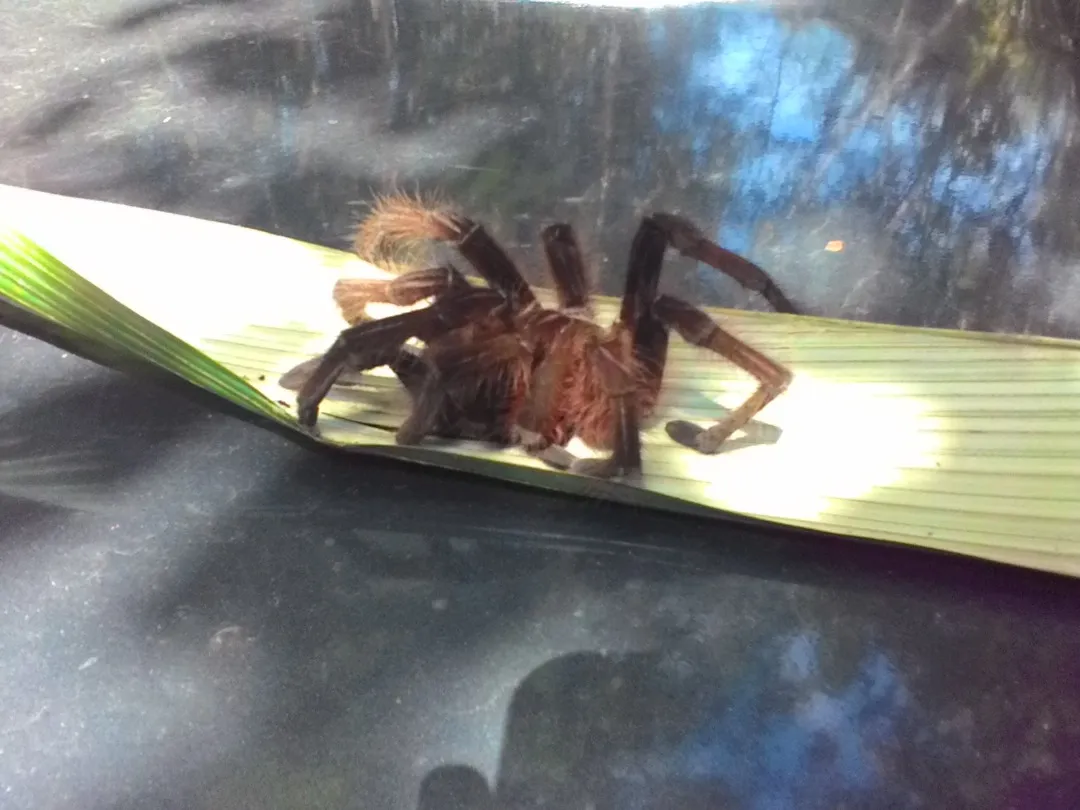
They know where they are, in the jungle. They look for their caves, which are in the ground, like crabs. They look for a branch without leaves, small or "stick" and they put it in the holes where the spider is, they move it little by little from one side to another and when the spider feels the "stick" it wants to grab it and so they can take it out. They have a procedure so that this spider does not bite them and at the same time they can eat it. I didn't taste them this time, but my friends who are close to them have tasted them, they say that they taste like squids, something like that. They also eat the fruit of the moriche palm and another palm fruit called manaca.
Ellos saben dónde están, en la selva. Buscan su cueva, que están en la tierra, tipo cangrejos. Ellos buscan una rama sin hojas, pequeña o “palito” y la meten en los huecos donde esta la araña, la van moviendo poco a poco de un lado a otro y cuando la araña siente el “palito” quiere agarrarlo y asì ellos pueden sacarla. Tienen un procedimiento para que esta araña no los pique y a la vez poder comérsela. En esta oportunidad no las probè, pero mis amigos que están cerca de ellos si las probaron, dicen que saben como a calamares, algo asì. Tambien consumen la fruta de la palma de moriche y otra fruta de palma llamada manaca.
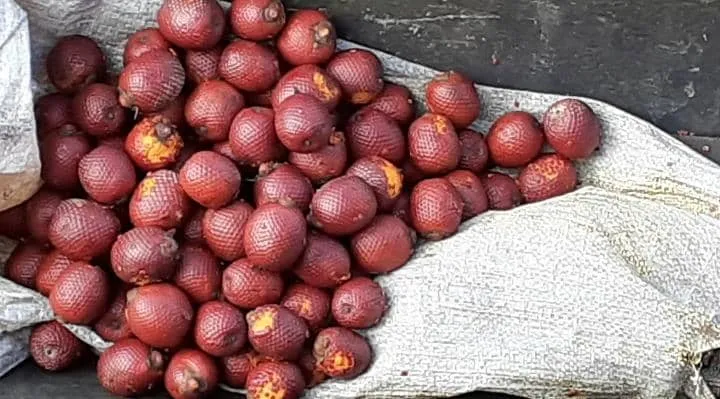
Moriche palm fruit // Fruta de la palma Moriche

Anyway, we had to cross the Parguaza river to get to know more closely the house of a Piaroa lady on the other side of the river. There we saw her very hard-working, hospitable, she offered us food. Then I took these pictures of her house and surroundings.
En fin que nos tocò cruzar el rio parguaza para conocer màs de cerca la casa de una señora piaroa que està del otro lado del rìo. Alli la vimos muy trabajadora, hospitalaria, nos ofreció comida. Luego saque estas fotos de su casa y alrededores.
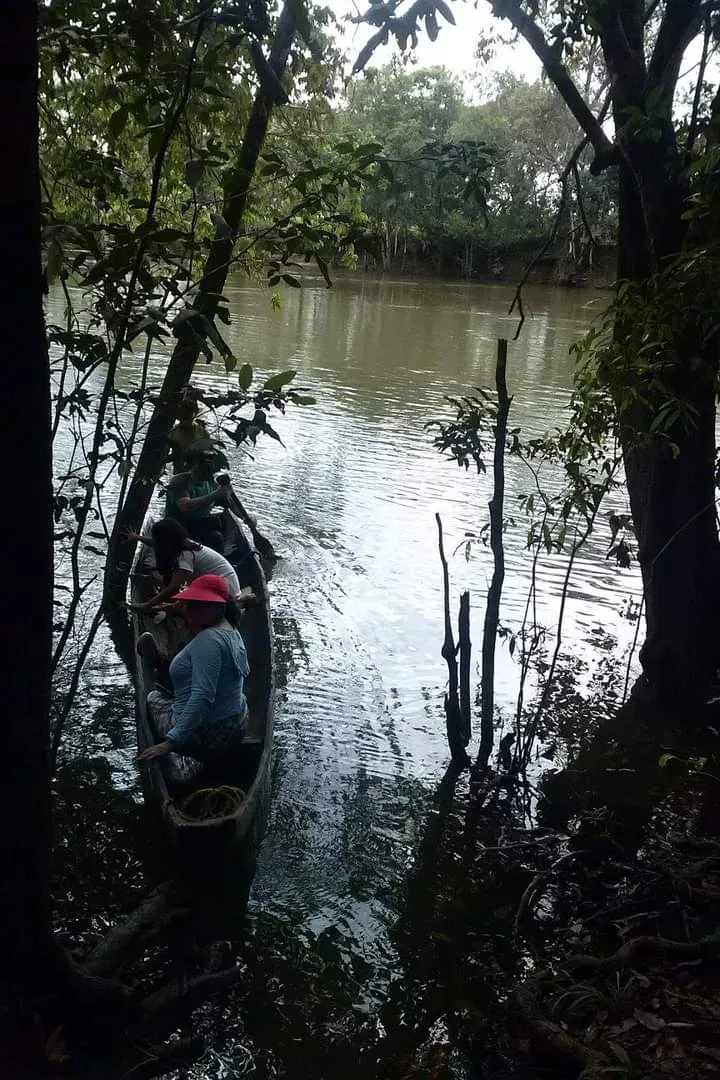
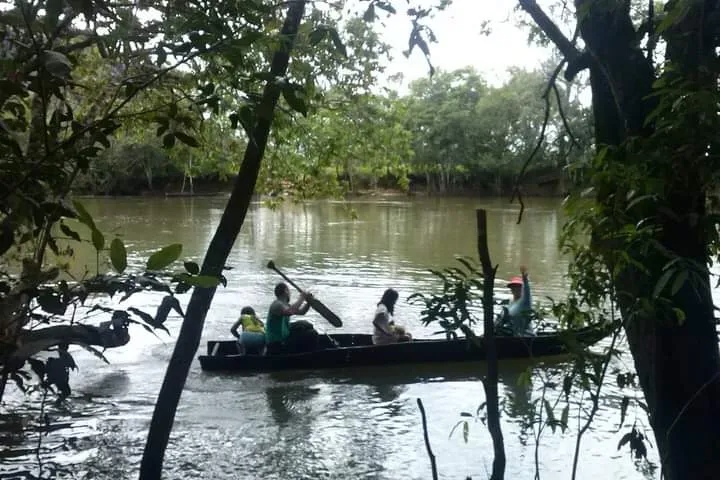
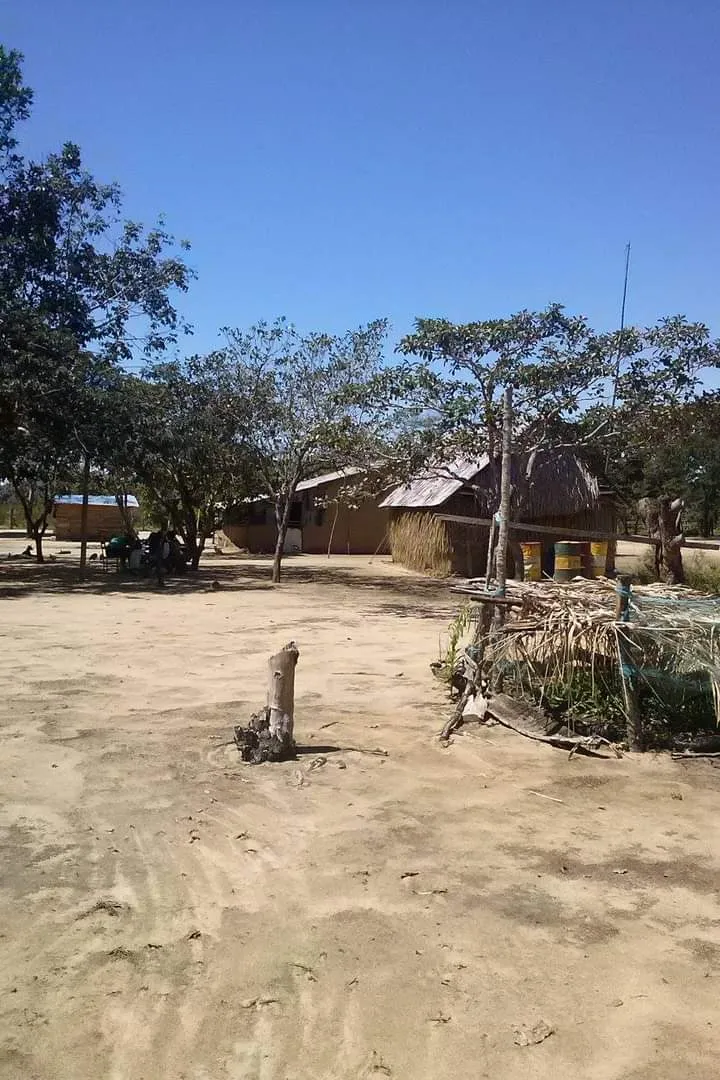
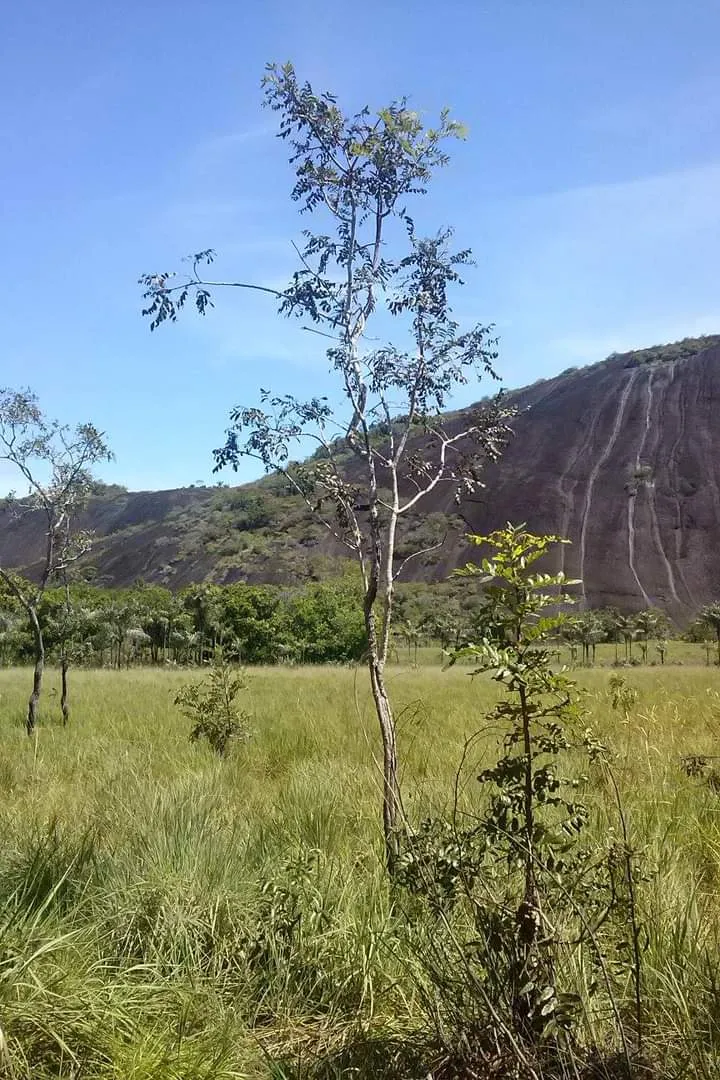
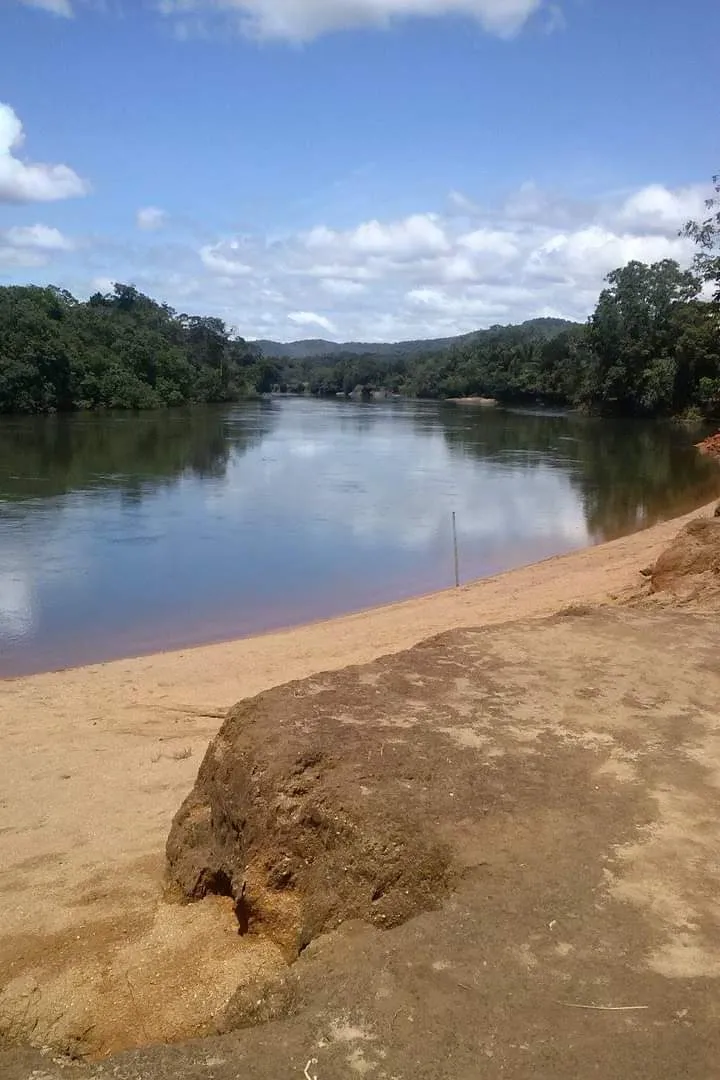
The lady tells us that she can't have many pets in her house. It is very close to the jungle and at night the tigrillos (small cats a little bigger than a domestic cat) go down to the river to drink water and if they see a dog, chicken or other livestock they drag them away, and only she can hear their cries while this feline eats them and goes into the thick jungle. To scare her. She mentioned to me that even with small children you have to be careful that after sunset, they are by the river or on the road where these predators come out. At night you hear the sounds of the jungle, from loud roars to the thunderous screeching of a herd of monkeys. By day you can watch the macaws and parrots soar through the sky and perch in the trees near the huts of the piaroas.
La señora nos cuenta que ella no puede tener muchas mascotas en su casa. Esta muy cerca de la selva y de noche bajan los tigrillos (felinos pequeños un poco màs grandes que un gato domestico) a tomar agua al rìo y si ven por allí un perro, gallina u otro animal de crìa se los llevan arrastras, que solo ella puede escuchar sus lamentos mientras este felino se los come y se adentra en la espesa selva. Para asustarse. Me mencionò que hasta con los niños pequeños hay que tener cuidado que después del atardecer, estèn por el rìo o en el camino donde salen estos depredadores. De noche tu escuchas los sonidos de la selva, desde rugidos fuertes, hasta el estruendoso chillar de una manada de monos. De dìa puedes ver las guacamayas y loros surcar el cielo y posarse en los àrboles cercanos a las chozas de los piaroas.
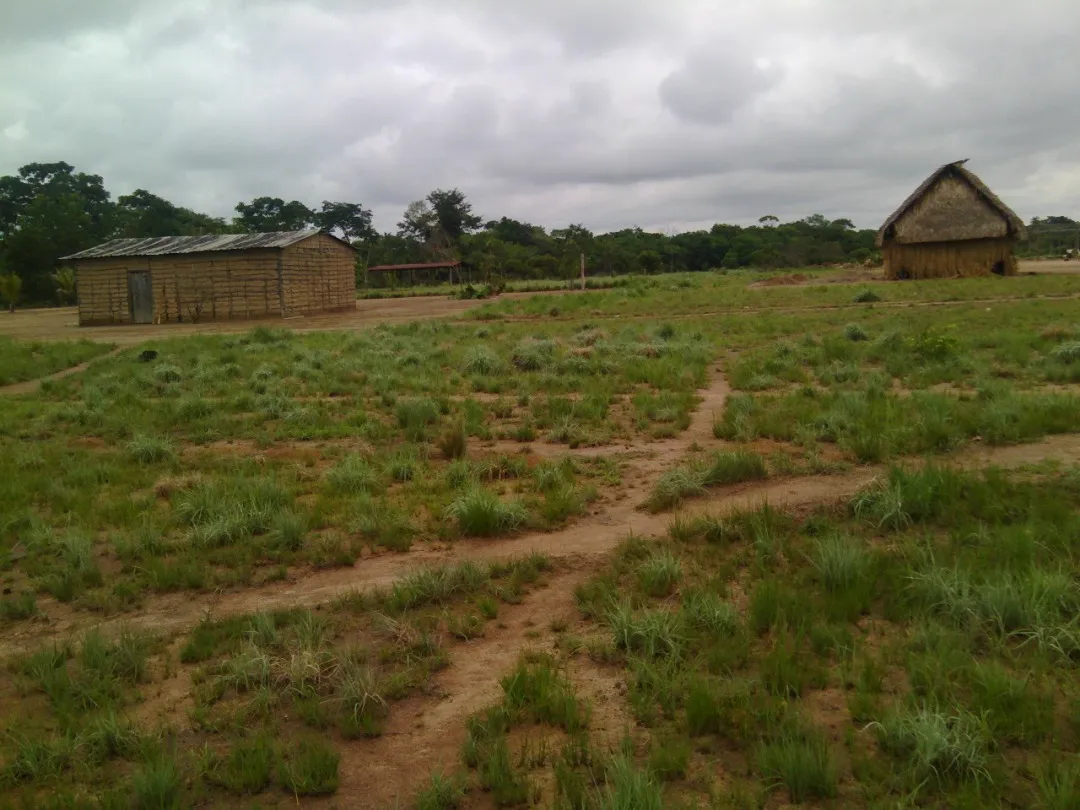
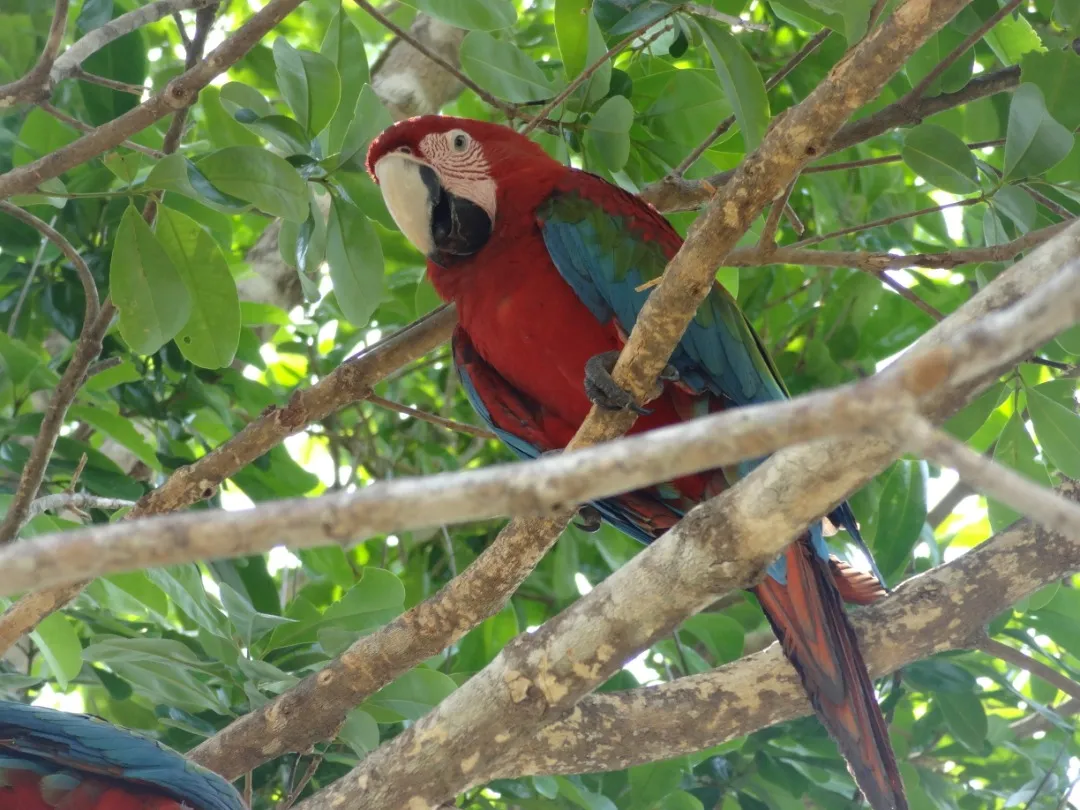
A super different and very rough life. But the atmosphere in their community is very calm, they laugh at everything, if you speak like them and you make a mistake they laugh, but not to make fun, but out of joy that you are making an effort to speak their language. They are very noble. And they are very religious, they believe in God. Almost always in their communities there is a church. After 4 days in a Piaroa community, the perception of life is different. It is another world, very important, that we must value, be interested in them and share with them. I can tell you that there is much to tell you about them, but I hope that you have enjoyed this short description, and that when you read it you can imagine being there and feeling, tasting and observing everything that I wanted to transmit to you. To finish here I "share" some words of greetings in the Piaroa language.
Una vida super diferente y muy ruda. Pero el ambiente en su comunidad es muy tranquilo, ellos se rìen por todo, si hablas como ellos y te equivocas se rìen, pero no para burlarse, sino por alegrìa de que te estas esforzando por hablar su lengua. Son muy nobles. Y son muy religiosos, creen en Dios. Casi siempre en sus comunidades hay una iglesia. Despuès de 4 dìas en una comunidad piaroa, la percepción de la vida es otra. Es otro mundo, por demás importante, que debemos valorar, interesarnos en ellos y compartir con ellos. Puedo decirles que hay mucho que contarles sobre ellos, pero espero que esta corta descripción la hayan disfrutado, y que cuando la lean se imaginen estar allí y sentir, saborear y observar todo lo que les quise transmitir. Para finalizar aquí les “comparto” algunas palabras de saludos en lengua Piaroa.
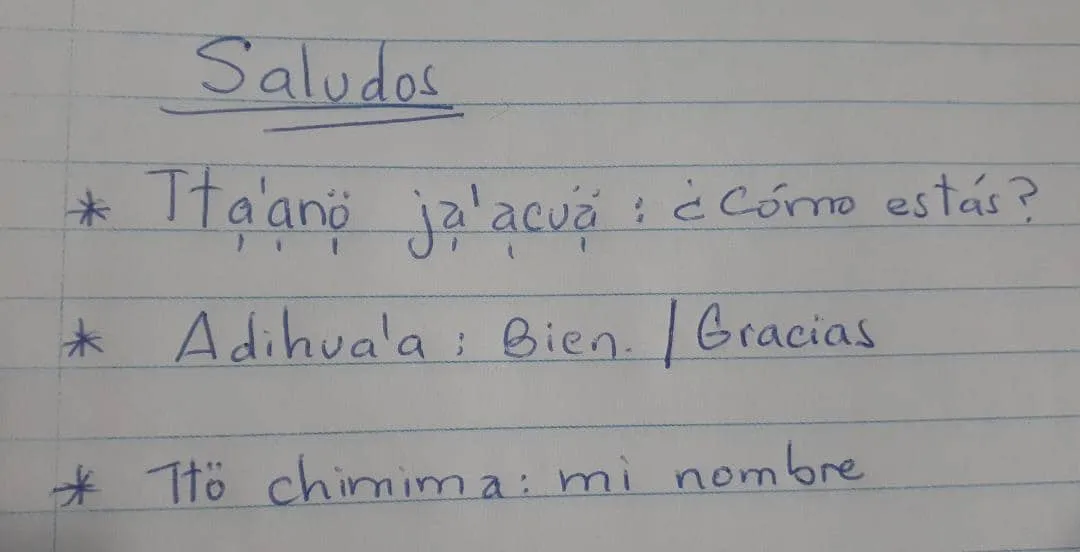
I hope you liked it.All photos are my property.In a next post. I will tell you more about this or another ethnic group that I met on that side of Bolivar state.💝Be well.See you next time💝
Espero que les haya gustado.Todas las fotos son de mi propiedad.En un próximo post les hablare màs de esta u otra etnia que conocí por ese lado del estado Bolìvar. 💝Que estèn bien. Hasta la próxima.💝
